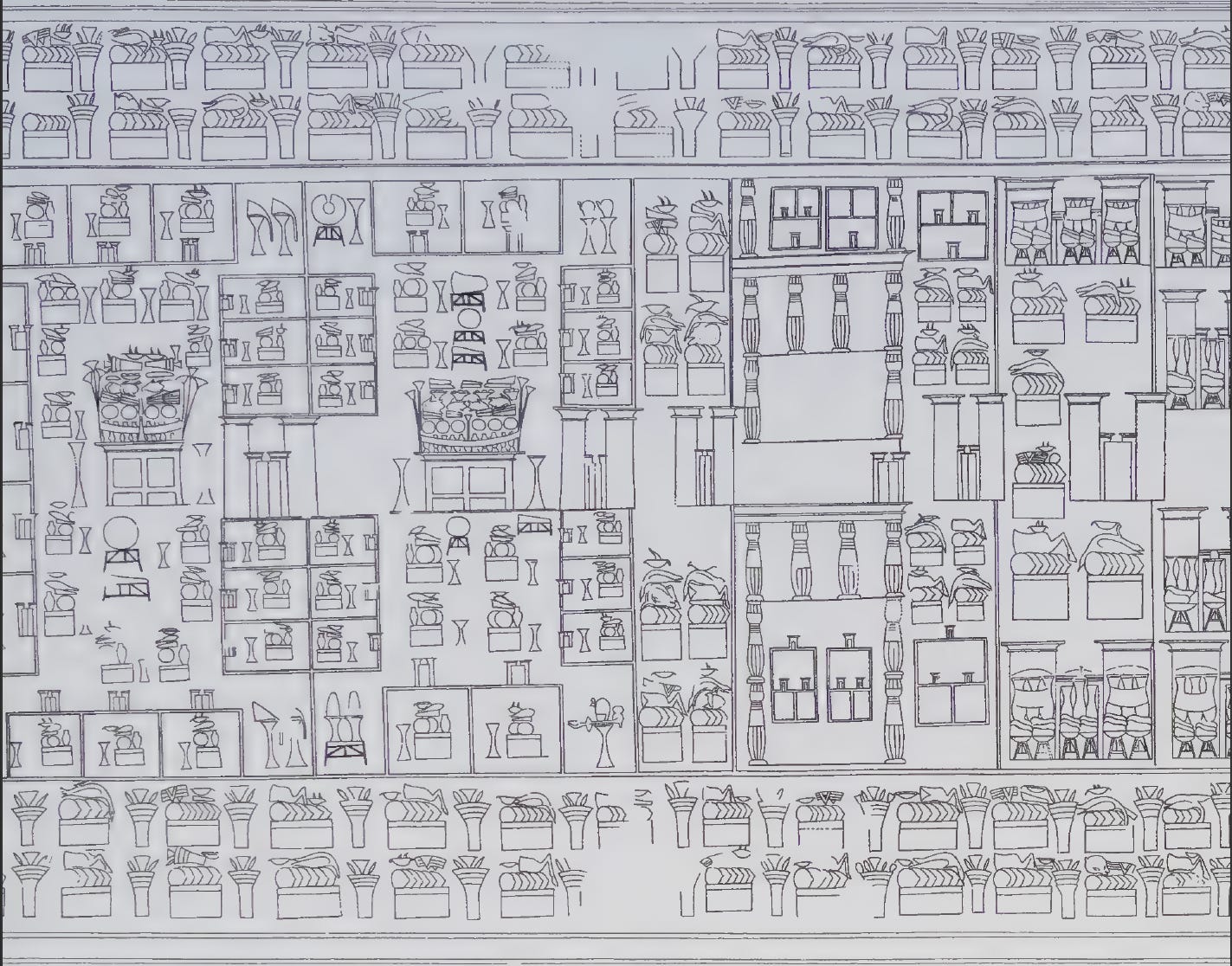Podcast Episode Details
Back to Podcast Episodes
Feeding the Aten: Akhenaten's Offering Obsession
Akhenaten physically manifested his cult to the sun, building a capital city at a break in the cliffs that created the perfect sunrise hieroglyph on the east bank, a city filled with open air temples into which the sun’s rays could reach directly. He created no statues to represent divine solar power, no intercessor between god and king; the sun’s warmth and light could not be contained in a cult statue. To honor the sun god, Akhenaten created a simple and literal system of giving back what the sun god had given to his people: his Aten temples contained thousands of altars filled to overflowing with the bounty of his people’s produce—joints of beef, oxen heads, ducks and geese, bread loaves in all shapes and sizes, onions, garlic, beer and wine.
In this episode, Kara Cooney and Amber Myers Wells dive into the overwhelming scale of the offering tables from Akhenaten’s reign and what they reveal about ritual, power, and ideology in the Amarna period. Why did Akhenaten commission thousands of offering tables for the Aten, who filled them, where did the food come from, and what does this short-lived practice tell us about the king’s vision of divine connection versus the economic and social realities of life at the new capital city of Akhetaten?
This is a confusing topic with many outstanding questions; please communicate your confusion, quandaries, and ideas in the comments!
Show notes
For more on the Great Aten Temple and Offering Tables, see the Amarna Project website, a treasure trove of information.
Check out this image of Akhenaten offering in his great Aten Temple, as pictured in the tomb of one of his courtiers and the temple’s Chief Servant, Panehsy.
For a statue fragment of Akhenaten holding his own personal offering table, see this piece at the Met!
Sources
Cooney, Kathlyn M. 2007. The cost of death: the social and economic value of ancient Egyptian funerary art in the Ramesside period. Egyptologische Uitgaven 22. Leiden: Nederlands Instituut voor het Nabije Oosten.
Janssen, Jac J. 1975. Commodity prices from the Ramessid period: an economic study of the village of necropolis workmen at Thebes. Leiden: E. J. Brill.
Kemp, Barry. 2013. The city of Akhenaten and Nefertiti: Amarna and its people. London: Thames & Hudson.
McClain, J. Brett and Kathlyn Cooney. 2005. “The daily offering meal in the ritual of Amenhotep I: an instance of the local adaptation of cult liturgy.” Journal of Ancient Near Eastern Religions 5, 41-78. DOI: 10.1163/156921205776137963.
Get full access to Ancient/Now at ancientnow.substack.com/subscribe
Published on 10 hours ago